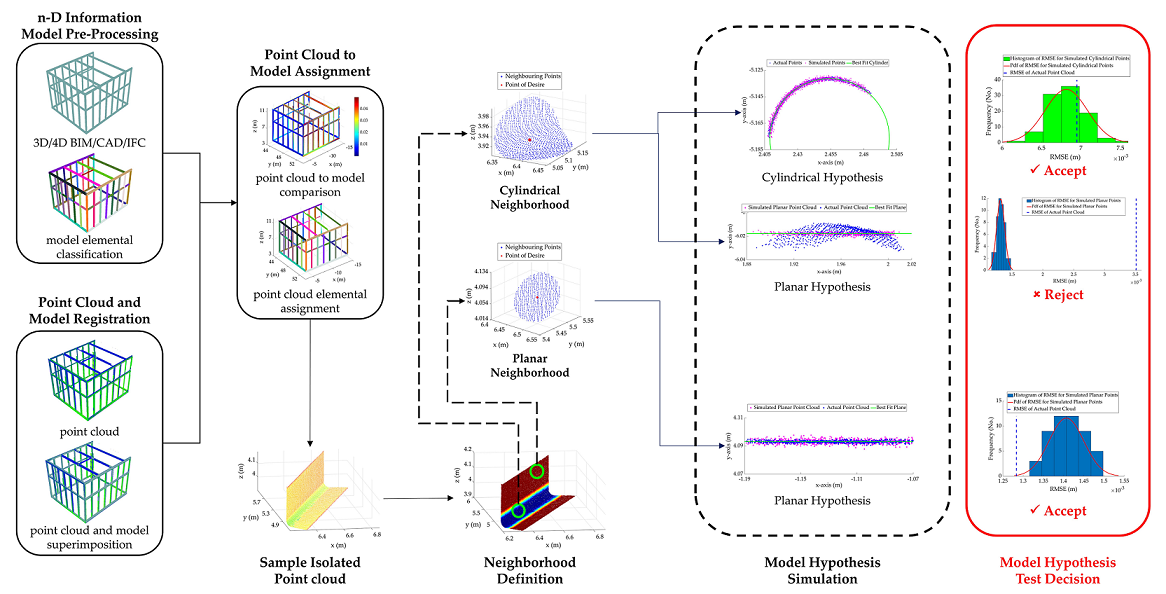This study presents established methods, along with new algorithmic developments, to automate the point cloud processing within the Field Information Modeling (FIM)™ framework. More specifically, given an n-D designed information model, and the point cloud’s spatial uncertainty, the problem of automatic assignment of the point clouds to their corresponding elements within the designed model is considered. The methods addressed two classes of field conditions, namely, (i) negligible construction errors; and (ii) existence of construction errors. The emphasis was given to describing and defining the assumptions in each method and shed light on some of their potentials and limitations in practical settings. Considering the shortcomings of current point cloud processing frameworks, three new and generic algorithms were developed to help solve the point cloud to model assignment in field conditions with both negligible, and existence (or speculation) of construction errors. The effectiveness of the new methods was demonstrated in real-world point clouds, acquired from construction projects, with promising results.

